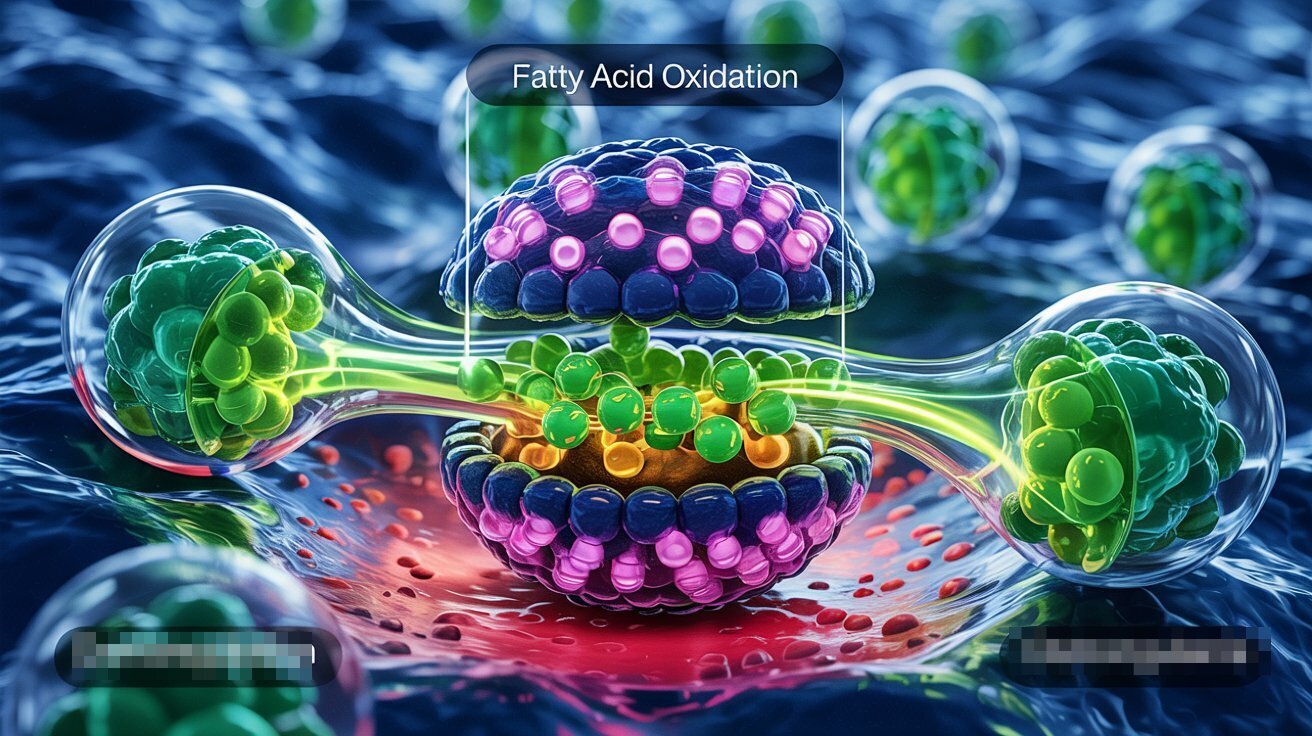
Fatty acid oxidation is a crucial process in our bodies, converting fats into energy. Ever wondered how your body keeps going during long workouts or fasting? Fatty acid oxidation is the answer. This process happens in the mitochondria, often called the cell's powerhouses. It breaks down fatty acids into acetyl-CoA, which then enters the citric acid cycle to produce ATP, the energy currency of cells. Without this process, our bodies would struggle to maintain energy levels, especially when glucose is scarce. Understanding fatty acid oxidation can help you appreciate how your body fuels itself and stays active.
What is Fatty Acid Oxidation?
Fatty acid oxidation is a metabolic process that breaks down fatty acids to produce energy. This process is crucial for maintaining energy levels, especially during prolonged exercise or fasting. Here are some fascinating facts about this vital biochemical pathway.
-
Fatty acid oxidation primarily occurs in the mitochondria, the powerhouse of the cell.
-
The process begins with the activation of fatty acids by coenzyme A, forming fatty acyl-CoA.
-
Carnitine, a molecule derived from amino acids, transports fatty acyl-CoA into the mitochondria.
-
Inside the mitochondria, fatty acids undergo beta-oxidation, a series of reactions that break down fatty acids into acetyl-CoA units.
-
Each cycle of beta-oxidation shortens the fatty acid chain by two carbon atoms.
-
Acetyl-CoA produced during beta-oxidation enters the citric acid cycle (Krebs cycle) to generate ATP, the cell's energy currency.
-
Fatty acid oxidation is more efficient in terms of energy yield compared to glucose oxidation.
-
Hormones like adrenaline and glucagon stimulate fatty acid oxidation during periods of fasting or intense exercise.
-
Insulin, on the other hand, inhibits fatty acid oxidation by promoting the storage of fatty acids as triglycerides.
-
Peroxisomes, another type of cell organelle, also play a role in fatty acid oxidation, especially for very long-chain fatty acids.
The Role of Enzymes in Fatty Acid Oxidation
Enzymes are biological catalysts that speed up chemical reactions, including those in fatty acid oxidation. Let's explore some key enzymes involved in this process.
-
Acyl-CoA synthetase activates fatty acids by attaching them to coenzyme A.
-
Carnitine palmitoyltransferase I (CPT1) facilitates the transport of fatty acyl-CoA into the mitochondria.
-
Carnitine palmitoyltransferase II (CPT2) converts fatty acyl-carnitine back to fatty acyl-CoA inside the mitochondria.
-
Acyl-CoA dehydrogenase initiates the first step of beta-oxidation by introducing a double bond into the fatty acyl-CoA.
-
Enoyl-CoA hydratase adds a water molecule to the double bond, forming a hydroxyl group.
-
Hydroxyacyl-CoA dehydrogenase oxidizes the hydroxyl group to a keto group.
-
Beta-ketothiolase cleaves the ketoacyl-CoA, releasing acetyl-CoA and a shortened fatty acyl-CoA.
-
Different isoforms of acyl-CoA dehydrogenase exist for short, medium, long, and very long-chain fatty acids.
-
Deficiencies in any of these enzymes can lead to metabolic disorders, such as Medium-Chain Acyl-CoA Dehydrogenase Deficiency (MCADD).
Fatty Acid Oxidation in Different Tissues
Fatty acid oxidation occurs in various tissues, each with unique roles and characteristics. Here are some interesting facts about tissue-specific fatty acid oxidation.
-
The liver is a major site of fatty acid oxidation, especially during fasting, to produce ketone bodies for energy.
-
Skeletal muscles rely on fatty acid oxidation during prolonged exercise to sustain energy levels.
-
The heart, a highly aerobic organ, depends on fatty acid oxidation for continuous energy supply.
-
Brown adipose tissue, specialized for heat production, uses fatty acid oxidation to generate heat in a process called thermogenesis.
-
The brain, although primarily dependent on glucose, can utilize ketone bodies derived from fatty acid oxidation during prolonged fasting or ketogenic diets.
-
Kidneys also engage in fatty acid oxidation to produce energy for their high metabolic demands.
Regulation of Fatty Acid Oxidation
The body tightly regulates fatty acid oxidation to balance energy production and storage. Here are some key regulatory mechanisms.
-
AMP-activated protein kinase (AMPK) activates fatty acid oxidation by inhibiting acetyl-CoA carboxylase, an enzyme that promotes fatty acid synthesis.
-
Malonyl-CoA, a product of acetyl-CoA carboxylase, inhibits CPT1, thus regulating the entry of fatty acids into the mitochondria.
-
Peroxisome proliferator-activated receptors (PPARs) are nuclear receptors that regulate the expression of genes involved in fatty acid oxidation.
-
Fasting increases the levels of free fatty acids in the blood, promoting their uptake and oxidation in tissues.
-
Exercise enhances the capacity for fatty acid oxidation by increasing the number of mitochondria and the expression of oxidative enzymes.
The Final Word on Fatty Acid Oxidation
Fatty acid oxidation is a fascinating process that fuels our bodies by breaking down fats into energy. This metabolic pathway is essential for maintaining energy levels, especially during prolonged exercise or fasting. Understanding how fatty acids are oxidized can help in managing weight, improving athletic performance, and even treating metabolic disorders.
Key points to remember include the role of mitochondria, the importance of enzymes like carnitine palmitoyltransferase, and the production of ATP. This process not only provides energy but also plays a role in overall metabolic health.
By grasping these concepts, you can better appreciate how your body converts fat into fuel. Whether you're an athlete looking to optimize performance or someone interested in metabolic health, knowing about fatty acid oxidation can be incredibly beneficial. Keep these facts in mind to make informed decisions about diet, exercise, and health.
Was this page helpful?
Our commitment to delivering trustworthy and engaging content is at the heart of what we do. Each fact on our site is contributed by real users like you, bringing a wealth of diverse insights and information. To ensure the highest standards of accuracy and reliability, our dedicated editors meticulously review each submission. This process guarantees that the facts we share are not only fascinating but also credible. Trust in our commitment to quality and authenticity as you explore and learn with us.
